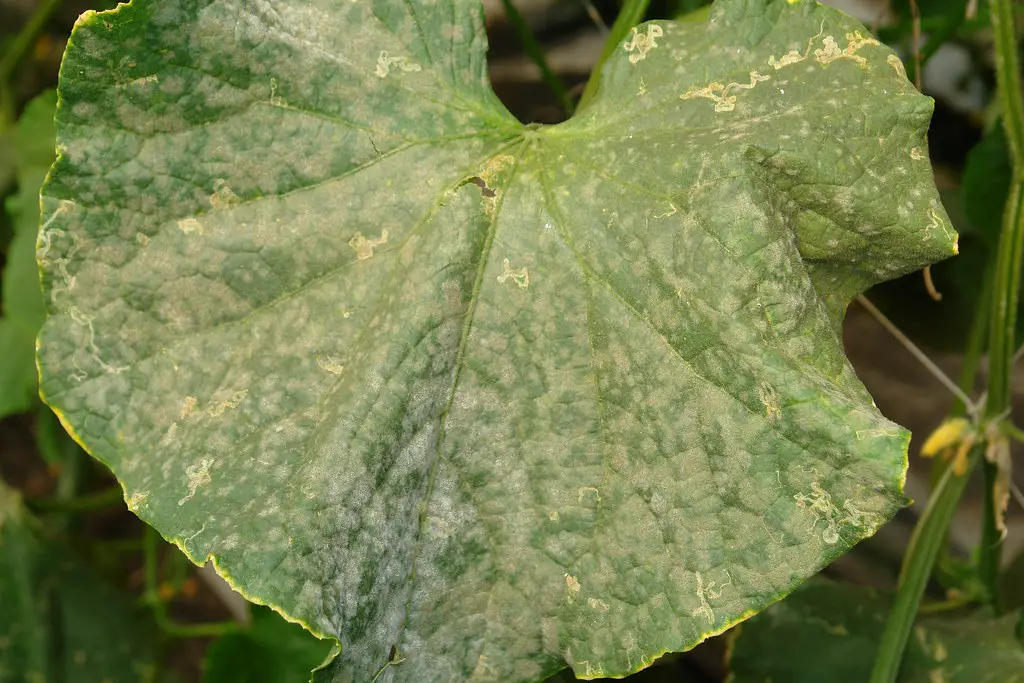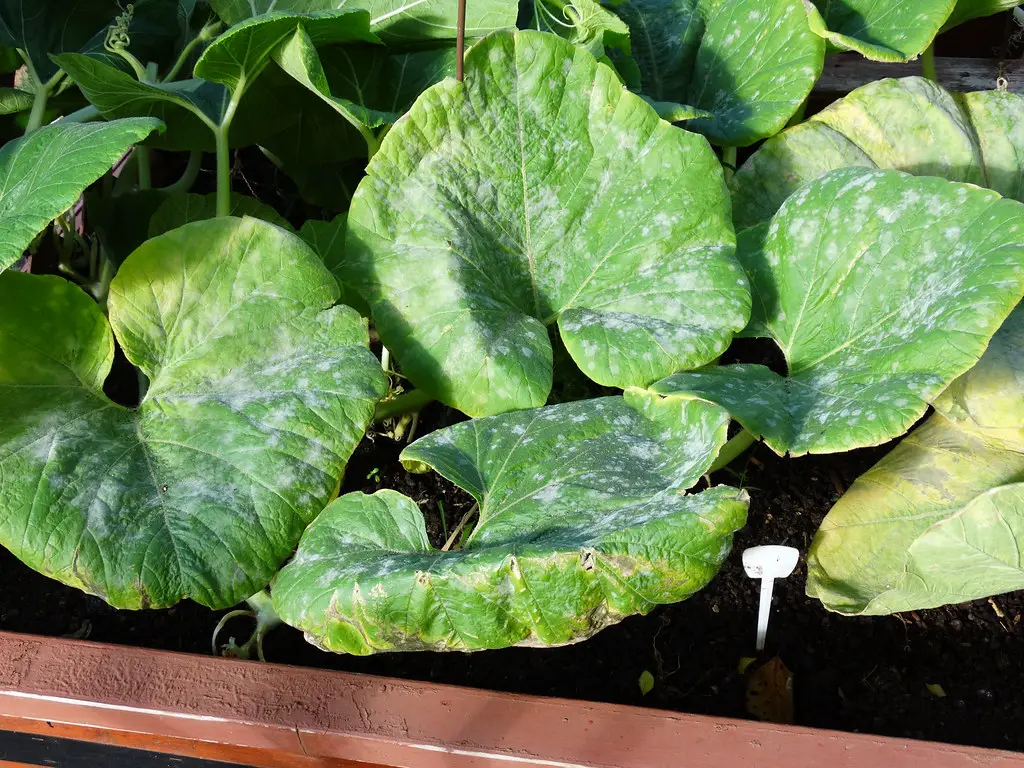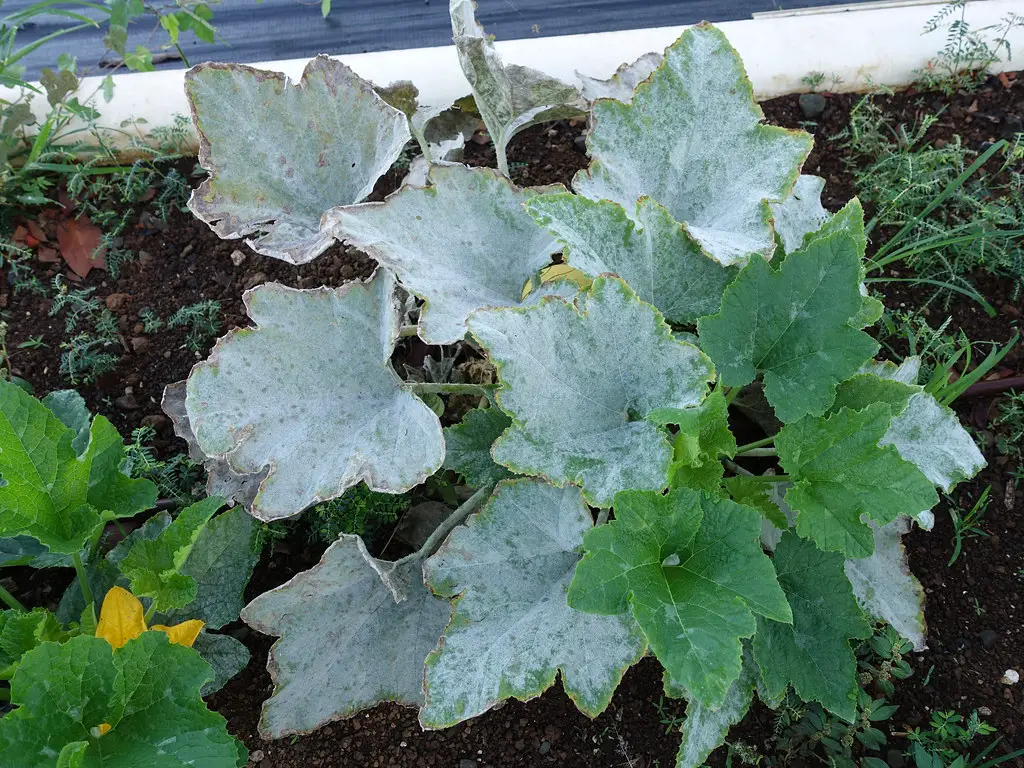Baking Soda Vs Milk: Which Is Better For Controlling Powdery Mildew? Powdery mildew is a common problem particularly with plants from the cucurbit family but it also affects things like roses and grapes. Given, that it is a widespread problem people often wonder how you can control it without using harsh chemicals. Two of the most commonly used home remedies that are recommended are baking soda and milk. But which one is better and do they really work?
There is significant evidence to suggest that both baking soda and milk work as a foliar spray to help reduce the effects of powdery mildew. However, a 2007 study stated that milk foliar sprays were more effective than baking soda in preventing the effects of powdery mildew.
They found that weekly foliar sprays containing 40% of milk in a greenhouse applied on a weekly basis reduce the effects of powdery mildew by 85 to 90%. However, these trials did not translate as well in to open field trials where the effectiveness was typically 50 to 70%.
At this stage the researches are unclear about what the mechanism is that allows the milk spray to be relatively effective. However, there is evidence that both baking soda and milk affect the powdery mildew by increasing the pH on the surface of the leaf which produces alkaline conditions that are not as favorable for the reproduction of mildew spores.

However, in the case of milk, which appears to have superior performance to baking soda, it is suggested that the pH may be only one of the mechanisms that causes a reduction in the activity of powdery mildew.
In the case of baking soda, researchers have identified that it does not kill the powdery mildew but rather retards its reproduction capability by maintaining alkaline conditions. If you stop using it the conditions rapidly return to acidic conditions and the reproduction rate of the fungal spores resumes as normal.
About Powdery Mildew
Powdery mildew is a disease that affects all regions of the world causing the production of a powdery film on the surface of leaves, buds, fruits, and flowers. The disease itself is caused by arrange of fungal spore varieties and it affects hundreds of different species of plants including trees, shrubs, vines, flowers, and vegetables.
The disease can be spread throughout your garden by wind-borne spores which means it transfers easily throughout your garden from one plant to the next. The spores themselves reproduce rapidly every 3 to 14 days if left unchecked and in severe cases, this will affect the production of fruit and vegetables.

Initial symptoms are the formation of a powdery white substance, however, it is common to also see in autumn the production of black spots which are the fruiting bodies produced by the fungus.
The conditions in which powdery mildew generally thrives is when there are hot days and relatively cool nights where the plants have relatively poor air circulation around them. This most commonly manifests itself in a productive vegetable garden where plants tend to be packed in relatively tightly. Powdery mildew commonly appears on things like pumpkins and zucchinis, particularly late in the season.
How To Apply A Milk Spray To Your Plants
As powdery mildew is a disease that returns every year it is best to use milk sprays as a preventative measure rather than respond to an outbreak as milk will help to contain the problem but it will not cure it. If you have plants that you know are susceptible to attack, such as pumpkin and zucchini it is best to spray them as the plant is starting to develop and weather conditions are beginning to favor the reproduction of fungal spores.
To prepare the solution, start by mixing a one to one ratio of water in a container and mix it thoroughly before filling a spray bottle with the solution. Ideally, the solution should be applied every 7 to 10 days as this matches the life cycle of the spores which take around that amount time to reproduce.

When applying the spray it is best to spray on a relatively still day at least 2 hours before there is any chance of rain. Ideally, the solution should be applied on a day when it is relatively sunny as it will ensure that the solution dries relatively quickly. Additionally, there are some that believe that the strong sunlight enhances the antiseptic properties of the milk solution. However, there is no direct evidence that I have been able to find to confirm this.
Can Leaves With Powdery Mildew Be Composted?
One of the most common questions asked is can you compost leaves infected with powdery mildew. The general answer to this, according to Oregon State University is that it is not a problem to compost infected leaves because the spores survive on living leaves only.
Additionally, most pathogens do not survive the composting process, so the left over plants can be disposed of easily.
I hope you found this article useful and have great success in your garden. If you have any additional questions or comments please leave them in the section below.
Relevant Articles
Why Are My Pumpkin Leaves Turning White?
What To Put Under Pumpkins To Protect Them?
How Much Does One Zucchini Plant Yield?
How Many Cucumbers Grow In A Container?
